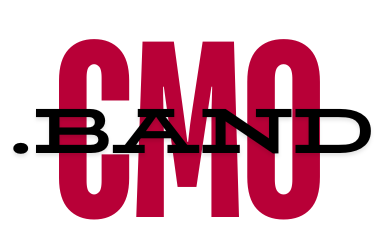Mastering the Metrics: Essential Content Marketing Benchmarks for 2023
In the ever-evolving landscape of digital marketing, content remains king. However, creating compelling content is only half the battle. To truly excel in today’s competitive environment, marketers must also master the art of measurement. Understanding and leveraging the right metrics can transform your content strategy from good to great, ensuring your efforts resonate with your audience and drive tangible business results. As we step into 2023, let’s explore the essential content marketing benchmarks that will help you measure success and optimize your strategy for maximum impact.
1. Engagement Rate: The Heartbeat of Content Performance
Engagement rate continues to be a critical metric for content marketers. It provides insight into how your audience interacts with your content, whether through likes, shares, comments, or time spent on page. High engagement rates indicate content that resonates with your audience, fostering a sense of community and loyalty. In 2023, aim for an engagement rate that surpasses industry averages, but remember, quality trumps quantity. Focus on fostering meaningful interactions rather than merely chasing higher numbers.
2. Conversion Rate: Turning Content into Action
The ultimate goal of any content marketing strategy is to drive action, whether that’s signing up for a newsletter, downloading a whitepaper, or making a purchase. Conversion rate measures the effectiveness of your content in compelling readers to take the desired action. Benchmarks for conversion rates can vary widely by industry and content type, but the key is to set realistic goals based on historical data and industry standards, and then strive for continual improvement. Use A/B testing to refine your calls-to-action (CTAs) and content formats for optimal conversion.
3. Organic Traffic: The Lifeline of Sustainable Growth
Organic traffic, the number of visitors coming to your site through unpaid search results, is a testament to the strength of your SEO and content quality. It’s a long-term metric that indicates sustainable growth and brand authority. In 2023, aim to increase your organic traffic by focusing on high-quality, SEO-optimized content that addresses the needs and questions of your target audience. Keep an eye on changes in search engine algorithms and adjust your strategy accordingly to maintain and grow your organic reach.
4. Bounce Rate: Keeping Your Audience Engaged
Bounce rate, the percentage of visitors who leave your site after viewing only one page, can offer insights into the relevance and engagement level of your content. A high bounce rate may indicate that your content is not meeting the expectations of your visitors or that your site is difficult to navigate. To improve, ensure your content is easily accessible, engaging, and provides clear pathways for further exploration within your site.
5. Time on Page: Measuring Content Depth Engagement
Time spent on a page is a direct indicator of how engaging and valuable your content is to your audience. It reflects the depth of interaction and interest in your content. In 2023, strive to create content that keeps your audience engaged for longer periods. This can be achieved through compelling storytelling, interactive elements, and providing comprehensive information that encourages readers to spend more time absorbing your content.
6. Social Shares: Amplifying Your Content’s Reach
Social shares are a powerful metric for gauging the virality and resonance of your content. High social share counts indicate that your content is not only engaging but also worth sharing with others. This organic amplification can significantly extend the reach of your content and enhance brand visibility. Encourage social sharing by making it easy for readers to share your content and by creating share-worthy content that sparks conversation or provides valuable insights.
7. Content ROI: The Bottom Line
Ultimately, the success of your content marketing efforts boils down to return on investment (ROI). This metric measures the profitability of your content strategy, comparing the revenue generated to the costs incurred. Calculating content ROI can be complex, involving multiple factors such as production costs, distribution expenses, and attributed revenue. However, it’s essential for understanding the financial impact of your content marketing and justifying continued investment in content creation.
Navigating the Metrics Landscape
Mastering these essential content marketing benchmarks in 2023 requires a balance of art and science. It’s not just about tracking numbers but interpreting them in the context of your overall marketing goals and audience needs. Regularly review your metrics, test new strategies, and be prepared to pivot based on what the data tells you. Remember, the goal is not to chase vanity metrics but to build a content strategy that drives real business results and resonates with your audience.
As we move forward into 2023, the digital marketing landscape will continue to evolve, and so will the metrics we rely on to measure success. By focusing on these essential benchmarks, you can ensure that your content marketing strategy remains effective, relevant, and aligned with your business objectives. Happy measuring!

A seasoned digital marketing strategist with over 8 years of experience across various areas of digital marketing, including SEO, SMM, PPC, content marketing, and email marketing. Specializes in transforming B2B, B2C, e-commerce, and SaaS businesses by creating effective go-to-market strategies and building thriving digital ecosystems. Known for a data-driven approach to optimizing campaigns and maximizing results.
“If your business is looking to scale or in need of a fresh perspective, feel free to contact”.





